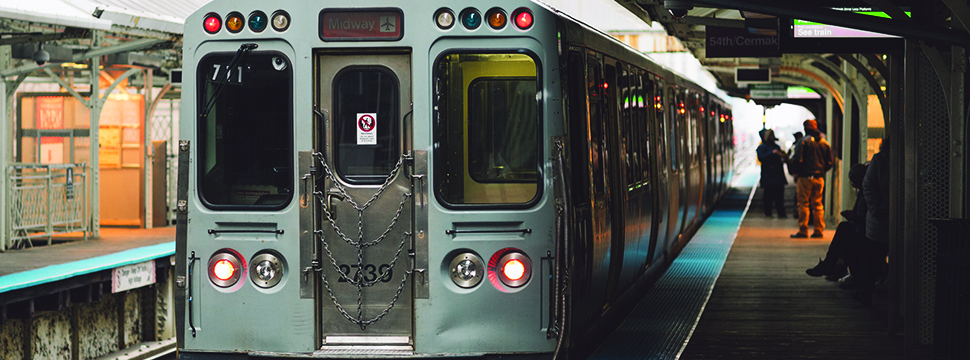Uncovering JAPA
Transit Oriented Development and Crime in Chicago

Recently, transit-oriented development (TOD) has been touted as a replicable model that can serve as a driver of equitable development in communities, as well as produce the density and walkability that are so valued by contemporary urban planners. But even today, planners and community members continue to express concern about transit, density, and their relationship to crime. Are these fears valid? Does increased density and transit accessibility also increase the amount of crimes in an area?
Transit Development, Crime Rates
Ahoura Zandiatashbar and Agustina Laurito attempt to answer this question in "An Empirical Analysis of the Link Between Built Environment and Safety in Chicago's Transit Station Areas" in the Journal of the American Planning Association (Vol. 89, No. 2). Their study attempts to determine if certain densities and development types around transit stations affect the number of crimes in the area, as well as if certain forms of development are associated with specific types of crimes.
Using Chicago as a case study, the investigation seeks to contribute to the literature on the relationship between the built environment and crime — a well-trod sociological area of study that has, as Zandiatashbar and Laurito emphasize, a noticeable blind spot in terms of transit-oriented development.
The investigation begins by organizing density clusters around Chicago "L" rail stations into four categories: Central Business District, Transit Oriented Development, Hybrid, and Transit Adjacent Development (TAD). The categories are defined by a spectrum of activity density, land use diversity, and amenity richness. The CBD in the downtown area of Chicago had the highest density, diversity, and amenity richness. TADs lay at the opposite end of this "spectrum," and were defined as areas that were close to a rail station but did not have high activity density, land use diversity, or amenity richness.

Table 3. Mean differences in crime rates among station area types and matched controls in Chicago, 2019.
Transit Areas' Crime Risk Analyzed
The authors then measured crime rates around each of the clusters to determine if certain densities and built environment types produced more crime. Overall, CBD transit areas seem to be the safest in terms of violent or property crimes. TOD station areas were the least safe, with the highest rate of property crimes amongst the four cluster types — these areas seemed particularly susceptible to property crimes, such as burglaries.
Zandiatashbar and Laurito's findings point to an interesting dynamic between density, land use diversity, and amenity diversity/richness. As they show with TODs, moderately high density combined with the amenity richness inherent in transit areas tended to produce more crimes. Density and amenities must then also be combined with a diversity of uses, including residential, that allow for an "eyes on the street" dynamic that contributes to overall safety in the neighborhood.
For planners in training like me, these findings challenge notions of density for density's sake or the assumption that transit-oriented development is inherently good for community development. While both these statements are largely true, Zandiatashbar and Laurito show that like all dynamics in practice, density and TOD must be developed thoughtfully, and in tandem with mixed-use development to ensure and enforce an eyes on the street dynamic at all hours. Crime is always a risk in urban areas, and should not be used as a rhetorical device to prevent further transit-oriented development; rather, crime needs to be considered along with a variety of other factors when we as planners pursue transit and density-oriented development in our neighborhoods.
Top Image: iStock/Getty Images Plus - bortescristian


